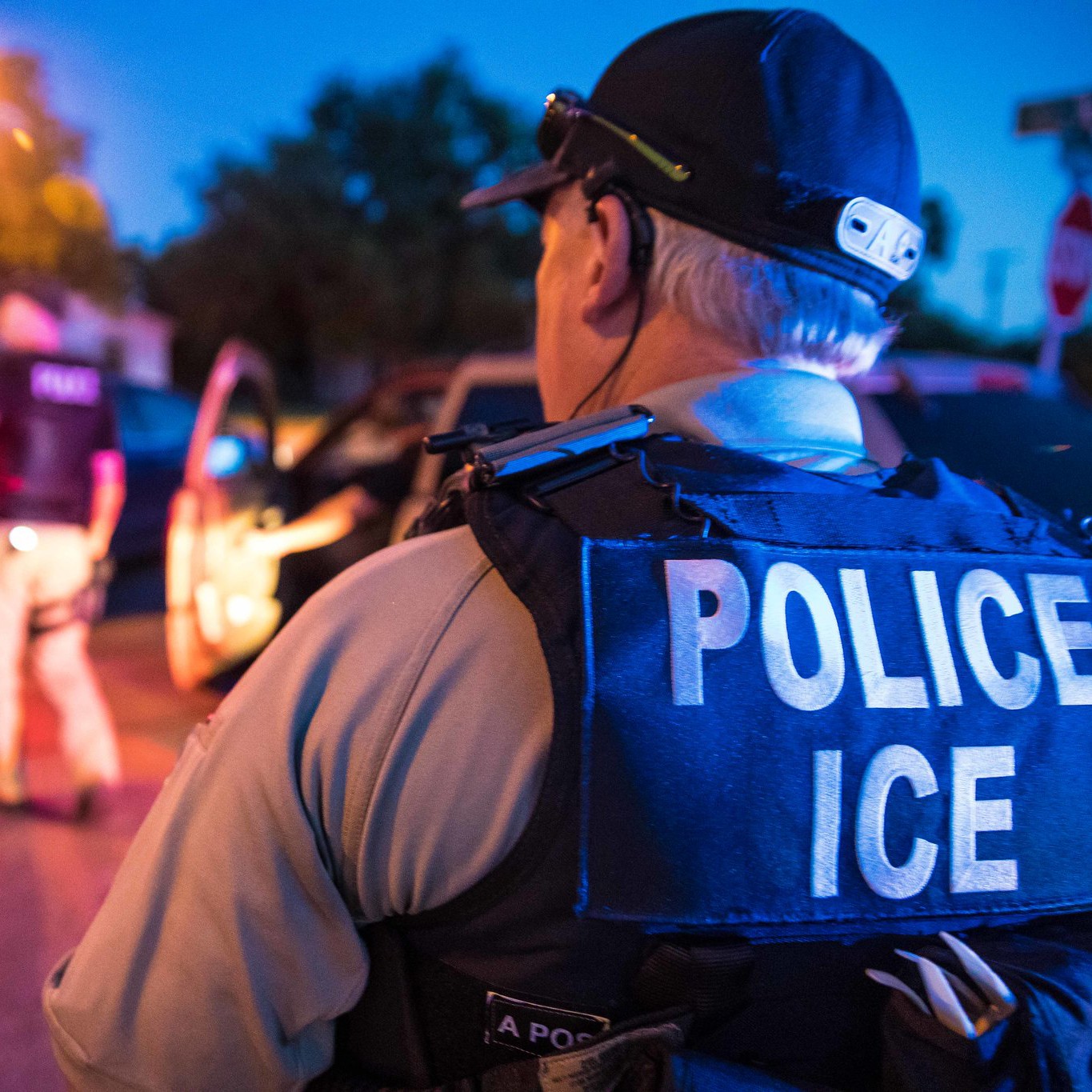On May 20, 50 Immigration and Customs Enforcement (ICE) officials including all regional field office directors and an assortment of Homeland Security special agents and investigators were summoned to Washington DC by White House Deputy Chief of Staff Stephen Miller. Miller is the point man for the Trump administration’s plan to deport “millions and millions” of what are now known as unauthorized immigrants.
What transpired there was reported by the Washington Examiner via “leaked documents” and interviews from persons who were present. Attendees were reportedly “eviscerated” by Miller, who was angry by the perceived lack of progress ICE and Homeland Security were making towards the promised level of deportations.
According to the ICE website, the YTD statistics for FY 2025 indicate that just 26,606 individuals have been arrested for criminal violations. The NBC News Deportation Tracker shows, as of June 20, 55,764 individuals are in custody, including 28.6 percent with actual criminal convictions, 25.6 percent pending criminal charges, 46.9 percent “other” violators, and 11 percent who are fast tracked for deportation. This is a long way from 1 million.
Miller reportedly demanded that ICE and Homeland Security pick up the pace of arrests to 3,000 per day, and asked why they weren’t at “Home Depot and 7 Eleven.”
Their best day to date yielded 1,800 arrests.
To put Miller’s demand of 3000 arrests per day in perspective, the total number of arrests made by every law enforcement agency in the United States for violent crimes runs between 500,000 and 600,000 annually. Another 1 million are arrested for property crimes. As there are 1.2 million state and local peace officers employed in the United States – the ratio of arrests is less than two annual arrests per year per officer. It should be noted that traffic arrests are not included in the FBI reports.
If the administration’s goal is to deport 1 million unauthorized immigrants in one year, each ICE officer would need to arrest 50 immigrants. This is clearly an impossible task, even with the recent inclusion in the “One Big Beautiful Bill” of hundreds of millions in additional ICE funding.
During the Biden administration, hundreds of thousands were deported, but they were outweighed by millions of border crossings and a dramatic increase in asylum claims. This allowed those seeking asylum to move well into the country, outside much of ICE’s traditional areas of operation, where many applied for and received work permits and became embedded in the communities where they live. Some have been there for years. In addition, much of the enforcement that occurred during the first Trump administration and the Obama administration was more limited to border areas and less scrutinized.
ICE efforts in California are further hamstrung by the fact that California’s “sanctuary” law prohibits peace officers from enforcing immigration laws or assisting ICE beyond an officer safety role. No sharing of information is allowed with the exception of notifying ICE if convicted criminals are due to be released from county jail or prison. ICE holds” pending deportation beyond completion of their sentences are also no longer allowed.
Arrests at Home Depot and 7 Eleven are perceived by many as a form of low hanging fruit as seemingly peaceful individuals are arrested by agents dressed for serious tactical situations. This is a bad look for ICE.
Yet, that is exactly where Stephen Miller wants them, as well as at farms, hotels, and restaurants. These are also locations where the Trump Administration has alternately ordered they cease arrests, then reinstated an arrest policy, then again ordered a cease to arrests. This might be because President Trump himself is a hotelier and resort operator. He is likely thinking, “what will guests eat, who will serve them, and who will clean it all up?”
Anthony Bourdain once wrote that without Mexican immigrants the US restaurant industry would effectively collapse and PRI’s Pam Lewison recently wrote that just 19 percent of crop workers were US citizens:
According to most recent data, 44 percent of farmworkers in the U.S. are undocumented. However, it is hard to know with certainty how accurate that percentage is with some estimates hovering around 50 percent and others as high as 75 percent. The U.S. National Agricultural Worker Survey (NAWS) breaks down farmworker demographics by region with more specificity. The 2015-2019 data show 51 percent of workers in California were considered undocumented and just 19 percent of crop workers were U.S. citizens.
in a recent article in The Atlantic, Nick Miroff writes that an ICE official calls the situation “mission impossible” with agents working long days and weekends, often away from home, and finding themselves criticized by even by deportation supporters who accuse them of having been too easy on enforcement during the Biden administration and now not working hard enough to achieve President Trump’s goals.
Meanwhile, according to the article, human trafficking, drug cases, and child exploitation cases have ceased. This is a situation one agent describes as “infuriating.”
A recent raid at a California marijuana farm reportedly included the discovery of child laborers “as young as 14” as well as three convicted criminals. California labor law allows minors as young as 12 to work within limitations as field workers.
The One, Big Beautiful Bill includes $8 billion to hire additional agents and $860 million for recruiting and retention bonuses, with the goal of increasing the size of the agency by 1000 agents. An additional $30 billion has also been budgeted, presumably for the enormous logistical demands necessary to arrest, detain, and transport the “millions and millions” called for by President Trump.
One solution might be to allow California law enforcement to participate in ICE operations in cases where the targets of the enforcement actions are limited to convicted criminals of a state or federal statute, or are suspects in criminal law violations from any other state – and not solely administrative immigration statues.
By absolutely refusing to cooperate, California has redefined “sanctuary,” which has traditionally been a politico-religious term that has been co-opted by immigration activists to include harboring criminals. That seems deeply wrong and dangerous, especially given California’s high crime rates.
We are in delicate times. The California National Guard – federalized by President Trump last month – and the United States Marines have been on duty guarding federal facilities in Los Angeles. Yet on July 15th Trump released 2000 of the 4000 guardsmen from duty, perhaps a sign that the political and security situation was improving.
California has the highest immigrant population of any state with 10.6 million, or roughly 25 percent of the state’s population and 22 percent of the national immigrant population.
Approximately 1.8 million of them are not in the state legally.
In all, 45 percent of Californians were born to families where at least one parent was a first-generation immigrant – legal or otherwise. Two of them are my sister and me, however, neither of us wants to see dangerous criminals remain in the U.S.
Absent a political solution, ICE agents will continue to remain between a rock and a hard place.
Steve Smith is a senior fellow in urban studies at the Pacific Research Institute, focusing on California’s growing crime problem.

